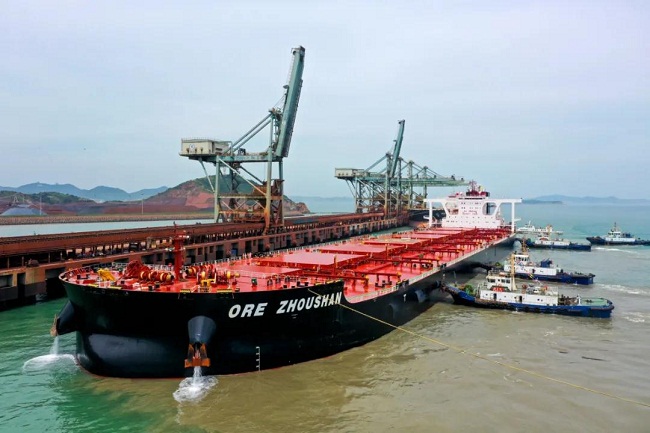
A ship berths at Zhoushan Port. [Photo/WeChat account: china-zjftz]
Zhoushan in East China's Zhejiang province is accelerating the construction of a river-sea combined transportation demonstration hub.
In the first half of the year, the cargo throughput at Zhoushan Port reached 303 million metric tons, a year-on-year increase of 6.7 percent.
The figure included 149 million tons of cargo delivered both by river and sea transportation, a 15.3 percent year-on-year increase.
Construction on major projects at Zhoushan Port has made significant progress. The second phase of the Xin'ao liquefied natural gas receiving station and the Cezi Island-Mamu Island oil pipeline began operating, the reconstruction of a 300,000-ton channel was completed, while the second phase of Yushan Island channel has finished dredging.
Zhoushan Port has reached a cooperative intention agreement with nearly 20 ports along the Yangtze River, including Jiujiang and Huangshi. It also inked a cooperation agreement in bulk cargo with Wuhan Port.
The river-sea combined transportation data center developed by Zhoushan has reduced the time needed for ships leaving and entering Zhoushan Port by 97 percent, as well as that for ship's operating at the port by 48 percent.
Zhoushan Port has also been pursuing transformation and upgrading by employing driverless trucks at Dapukou Wharf, as well as establishing an intelligent bulk cargo storage yard at Shulanghu Wharf.
Zhoushan has also ramped up efforts to develop its comprehensive maritime service industry by introducing 81 maritime service companies in the first six months of the year and adding two multi-functional ships for maritime service.
In the Jan-July period, the total output of the maritime service industry in Zhoushan amounted to 19 billion yuan ($2.94 billion), a year-on-year increase of 40 percent, and provided $1.45 billion worth of supplies to international ships, a year-on-year increase of 33 percent.